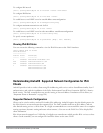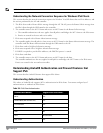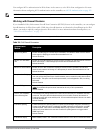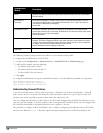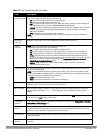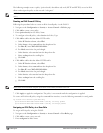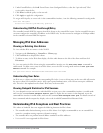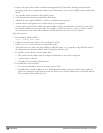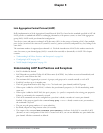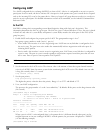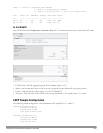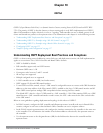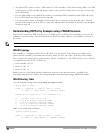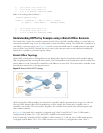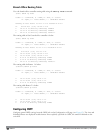
DellPowerConnectW-SeriesArubaOS6.2 | User Guide LinkAggregation ControlProtocol(LACP) | 148
Chapter 9
Link Aggregation Control Protocol (LACP)
Dell’s implementation of Link Aggregation Control Protocol (LACP) is based on the standards specified in 802.3ad.
LACP provides a standardized means for exchanging information, with partner systems, to form a link aggregation
group (LAG). LACP avoids port channel misconfiguration.
Two devices (actor and partner) exchange LACP data units (DUs) in the process of forming a LAG. Once multiple
ports in the system have the same actor system ID, actor key, partner system ID, and partner key, they belong to the
same LAG.
The maximum number of supported port-channels is 8. With the introduction of LACP, this number remains the
same. In essence, a port-channel group (LAG) is created either statically or dynamically via LACP. This chapter
contains:
l "Understanding LACP Best Practices and Exceptions" on page 148
l "Configuring LACP" on page 149
l "LACP Sample Configuration" on page 150
Understanding LACP Best Practices and Exceptions
l LACP is disabled by default
l LACP depends on periodical Tx/Rx of LACP data units (LACPDU). Any failures are noticed immediately and
that port is removed from the LAG
l The maximum LAG supported per system is 8 groups; each group can be created statically or via LACP
l Each LAG can have up to 8 member ports
l The LAG group identification (ID) range is 0 to 7 for both static (port-channel) and LACP groups
l When a port is added to a LACP LAG, it inherits the port-channel’s properties (i.e. VLAN membership, trunk
status etc)
l When a port is added to LACP LAG, the port’s property (i.e. speed) is compared to the existing port properties.
If there is a mismatch, the command is rejected.
l The LACP commands can not be configured on a port that is already a member of a static port-channel.
Similarly, if the group assigned in the command lacp group <number> already contains static port members,
the command is rejected.
l The port uses the group number as it’s actor admin key.
l By default, all ports use long timeout values (90 seconds).
l The output of the command show interface port-channelnow indicates if the LAG is created by LACP
(dynamic) or static configuration. If the LAG is created via LACP, you can not add/delete any ports under that
port channel. All other commands are allowed.



